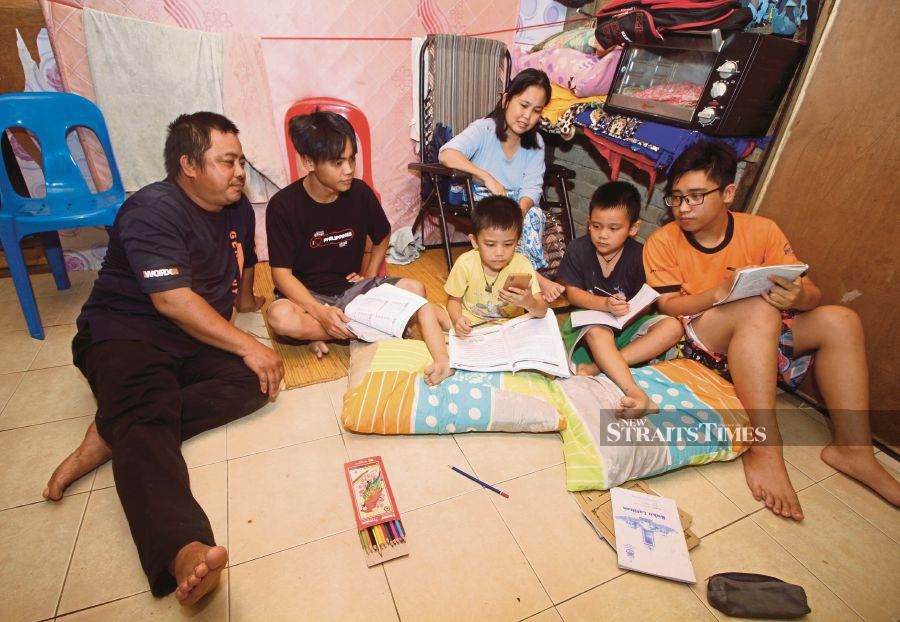By Olivia Miwil - January 28, 2021 @ 10:45am
Louis Gombolong and his wife, Floren Basin, monitoring their children’s online classes at their home in Kampung Maang, Penampang, on Tuesday. -- NSTP/ MALAI ROSMAH TUAHPENAMPANG: A sole breadwinner has high hopes that education will provide his children with a bright future. However, Louis Gombolong, 43, said the shift from face-to-face to online learning is not something his family could cope with and feared it would cost his children's future.
"I have four schoolgoing children aged seven, nine, 14 and 17. The three younger children have to take turns using a handphone, while my son, who will sit his Sijil Pelajaran Malaysia, is attending school.
"Knowing parents' limitations, the schools only give instructions via WhatsApp groups," said the father of five, who works at the Kota Kinabalu City Hall's Waste Management Department.
Gombolong's two young children attend SK St Aloysius, the older ones are studying at SMK Limbanak while the eldest is studying at a university in Johor.
He expressed hope that his children could attend physical classes to have better interaction with their teachers and to be more disciplined in their learning.
"When it comes to video-conferencing, doing it on a small-screen phone is not suitable for children.
"Another issue is the cost involved in an Internet data plan, which I cannot afford," he said, adding that he had yet to receive any assistance despite his family being categorised in the B40 income group.
Gombolong hoped that the government would provide free laptops and Internet access for his village at Kampung Maang here, less than five minutes from the nearest town.
Last year, the state Education Department reported that about 52 per cent of students in the state did not have access to the Internet, smartphones, computers or mobile gadgets needed to participate in online classes.
On Monday, it was stated that the RM150-million Cerdik initiative, which is under the 2021 Budget, is set to begin next month. It will provide digital access comprising laptops, tablets and data connectivity to students from low-income families.

Comments
Post a Comment